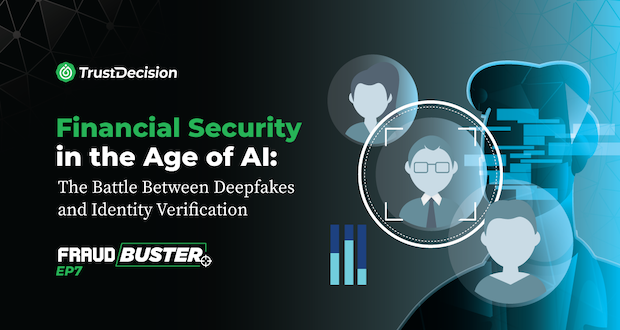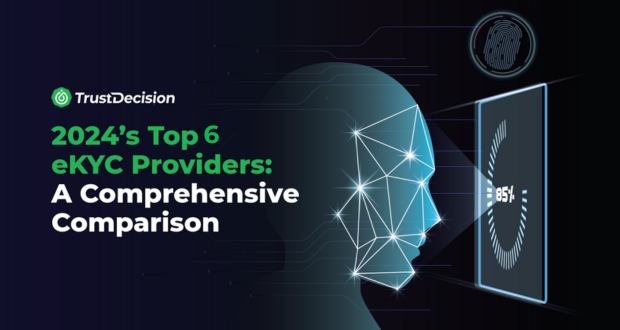Introduction
Generative Artificial Intelligence (Generative AI) is reshaping the technological landscape, creativity, and communication. At its core, Generative AI refers to a class of machine learning models that generate new content—ranging from images and videos to text and audio—by learning patterns from existing data. While this innovation holds immense promise, it also poses a significant threat to financial security.
The urgency lies in comprehending the risks posed by Generative AI and developing effective countermeasures. Ignorance is no longer an option; organizations must equip themselves to combat this emerging threat.
Understanding Generative AI
Generative AI operates by learning statistical patterns from existing data and then generating new content that adheres to those patterns. Let’s explore its key capabilities:
- Creating New Media: Generative AI models can create realistic images of non-existent objects, landscapes, or even people. These images are often indistinguishable from genuine photographs. Additionally, deepfake videos, a notorious application of Generative AI, seamlessly replace faces in existing videos with those of other individuals. The result is a convincing but entirely fabricated video.
- Text and Audio Generation: Language models like the GPT family and BERT can generate coherent and contextually relevant text. They can write articles, stories, or even engage in chat conversations. Moreover, Generative AI can synthesize human-like voices, making it challenging to differentiate between real and artificially generated audio.
- Mimicking Human-Like Responses: Generative AI can simulate human-like interactions in chat conversations. Whether it’s customer support, social media bots, or phishing attacks, these models can craft responses that appear genuine. The danger lies in malicious actors leveraging this capability to deceive users, perpetrate financial scams, and manipulate trust.
- Leading Generative AI Models:
- GPT (Generative Pre-trained Transformer) Series: Developed by OpenAI, GPT models have achieved remarkable success in natural language understanding and generation. They learn from vast amounts of text data and can generate contextually rich responses.
- BERT (Bidirectional Encoder Representations from Transformers): BERT, another influential model, excels in understanding context and semantics. It has applications in search engines, chatbots, and sentiment analysis.
In summary, Generative AI is a double-edged sword. While it empowers creativity and innovation, it also introduces vulnerabilities that can be exploited for fraudulent purposes. Organizations must stay informed, invest in deepfake detection techniques, and collaborate across sectors to safeguard against this new frontier in financial fraud. By understanding both the promise and peril of generative AI, decision-makers can make informed choices to protect their businesses and clients.
Definition of Deepfakes and Their Relevance to Financial Fraud
Deepfakes, a portmanteau of “deep learning” and “fake,” refer to manipulated or fabricated media content created using artificial intelligence (AI) techniques. These sophisticated forgeries can convincingly alter audio, video, or images, making it challenging to discern between genuine and manipulated content. Their relevance to financial fraud lies in their potential to deceive individuals, compromise security, and perpetrate scams.
Examples of Deepfake Applications
- Voice Spoofing:
- Deepfake AI can replicate someone’s voice with remarkable accuracy. Fraudsters can use this technology to impersonate executives, clients, or even family members during phone calls. Imagine a scenario where a CEO’s voice is convincingly mimicked to authorize fraudulent transactions.
- Deepfake Detection Techniques are crucial to identify such voice spoofing attempts.
- Fabricated Photo and Video Media:
- Deepfake videos can superimpose faces onto existing footage, creating realistic but entirely fictional scenarios. For instance, a deepfake video could show a politician making controversial statements they never uttered.
- Similarly, manipulated images can be used to create false evidence, misrepresent identities, or deceive investors.
Statistics: The Alarming Reality
A recent survey revealed that 37% of organizations globally have encountered deepfake voice fraud attempts. This statistic underscores the urgency of addressing this threat. Organizations must invest in robust detection mechanisms and educate employees about the risks posed by deepfakes.
Case Study: The Energy Group CEO’s Voice Clip
In a groundbreaking case, an energy group CEO fell victim to an AI-facilitated fraud scheme. The perpetrator used a deepfake voice clip to impersonate the CEO during a critical board meeting. The fraudulent instructions led to substantial financial losses for the company. This incident serves as a wake-up call for businesses to fortify their defenses against deepfake attacks.
Implications of Deepfakes for Financial Institutions
Financial institutions find themselves at a critical juncture as deepfake technology continues to evolve. The implications are far-reaching, affecting security, trust, and stability. Let’s delve into the challenges posed by deepfakes and explore potential solutions.
Risks of Deepfake Technology in Banking
The rise of deepfake technology has opened up new avenues for identity fraud, a crippling menace that financial institutions now grapple with. When applied to loan applications, deepfake technology can distort the lines of credibility, creating havoc in the procedure. Moreover, the potential for market manipulation through these misleading technologies is immense. However, the banking industry isn't standing idle, with several deepfake detection techniques emerging from the shadows.
Deepfake Detection Techniques
Detecting deepfakes requires a multi-pronged approach:
- Behavioral Biometrics: Analyzing user behavior—typing patterns, mouse movements—can reveal anomalies caused by deepfake interactions. By monitoring these subtle cues, institutions can identify suspicious activity.
- Voiceprint Analysis: Comparing voiceprints during calls can help detect discrepancies. If a caller’s voice deviates significantly from their known voiceprint, it raises a red flag.
- Liveness Tests: Real-time challenges, such as blinking or head movements, can verify user presence. These tests prevent fraudsters from using pre-recorded deepfake audio.
- AI Algorithms: Machine learning models can learn to recognize deepfake patterns. Regular updates and fine-tuning are essential to stay ahead of evolving techniques.
Protecting Financial Data from Deepfake Fraud
While the threat of deepfake fraud looms large, the financial institutions have started to armor up. Employee training has taken precedence, as an aware workforce is a formidable first line of defense against these frauds. Multi-Factor Authentication (MFA) adds another layer of security, making it significantly more difficult for fraudulent activities to cut through. Advanced AI Solutions, continually improving their proficiency, are also playing a pivotal role in fending off deepfake threats. The power of collaboration, bringing together various stakeholders, is also emerging as a strong defense strategy against deepfakes.
In summary, financial institutions must adapt swiftly to combat deepfake threats. Proactive measures, robust detection, and collaboration are essential to safeguard customer trust and financial stability.
AI-Powered Identity Fraud
A 10x Increase in Deepfakes
Recent research has revealed a staggering 10-fold increase in deepfake incidents between 2022 and 2023. These AI-generated forgeries have infiltrated various domains, posing a significant threat to security and trust.
Global Trend: Prevalence of AI-Powered Identity Fraud
Across industries, from finance to healthcare, AI-powered identity fraud is on the rise. Fraudsters exploit deepfake technology to manipulate transactions, gain unauthorized access, and compromise sensitive data. The global trend underscores the need for robust countermeasures.
Safeguarding Against Deepfakes
As organizations grapple with the rising threat of deepfakes, implementing robust strategies becomes paramount. Here are key approaches to mitigate risks:
- Deepfake Detection Techniques:
- Up-to-date Methods: Stay abreast of the latest advancements in deepfake detection. Researchers continually develop innovative techniques to identify manipulated content. These may include analyzing inconsistencies in facial movements, audio artifacts, or subtle visual cues.
- Behavioral Biometrics: Monitor user behavior during interactions. Anomalies caused by deepfake-generated responses can be detected through typing patterns, mouse movements, and other behavioral cues.
- AI Algorithms: Deploy machine learning models specifically trained to recognize deepfake patterns. Regular updates and fine-tuning are essential to stay ahead of evolving techniques.
- Enhanced Identity Verification:
- Rethink Vocal Recognition: Traditional voice recognition methods may fall short against deepfake-generated audio. Consider combining voiceprint analysis with behavioral cues (such as blinking or head movements) to verify user presence.
- Multi-Modal Verification: Combine multiple biometric factors (voice, face, fingerprint) for robust identity verification. This layered approach makes it harder for fraudsters to bypass security.
- KYC++ in TrustDecision:
- Biometrics Authentication: TrustDecision’s AI-based risk decision platform leverages biometric data, including facial recognition, to verify user identities. The algorithm excels at distinguishing between authentic biometric features and the cunning tactics employed by deepfake perpetrators. Whether it’s 3D masks, head models, or video impersonation, we’ve got it covered. By doing so, we not only enhance security but also raise the bar for fraudsters attempting to breach our defenses.
- Document Verification: TrustDecision validates official documents (IDs, passports) to ensure their authenticity. Deepfake-generated IDs can be flagged during this process.
- Device Check: Analyzing device anomalies (IP address, geolocation, device type) adds an extra layer of defense against deepfake-related identity fraud. Let’s illustrate this with a real-world scenario:
Recently, a financial technology company in Southeast Asia faced a complex fraud challenge. Fraudsters in the region utilized advanced AIGC (Artificial Intelligence Generated Content) technology to create highly realistic facial images and videos, attempting to circumvent the traditional KYC (Know Your Customer) processes. This method not only threatened the company’s security but also led to significant financial losses.However, by adopting the KYC++ solution from TrustDecision, the company could effectively identify and prevent such complex fraudulent activities. The KYC++ live detection product employs advanced algorithms capable of accurately distinguishing between real users and fake facial images and videos generated by AIGC, effectively countering deepfake technology. More crucially, with integrated device fingerprint technology, KYC++ is able to detect that multiple logins are originating from the same device, even if the IP address or geolocation varies.Conclusion
In this rapidly evolving landscape, Generative AI emerges as both a boon and a bane. Its creative potential knows no bounds, yet its misuse threatens financial security. Deepfakes, fueled by Generative AI, are multiplying exponentially, infiltrating various domains and posing a significant threat to security and trust.
The urgency lies in comprehending the risks posed by deepfakes and developing effective countermeasures. Organizations must act swiftly to understand, detect, and combat this menace. From deepfake voice fraud attempts to manipulated videos, the implications for financial institutions are profound. Trust is at stake, and the stakes are high.









.jpeg)




